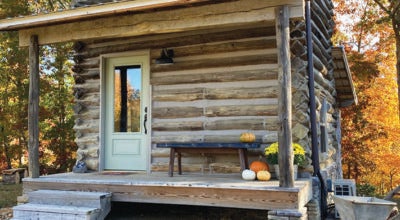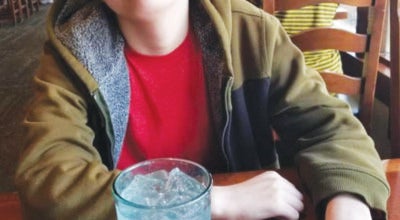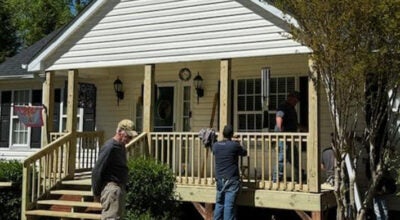The Literary Corner: Renegade Writer’s Guild
Published 8:46 am Thursday, July 26, 2018
“Prequel to Lucius Awakens”
By Kevin F. Wishon
There has been much discussion among our members about the stories we will be writing for our third book. This week, I have decided to write a short prequel to get the basics of the story I plan to write, solidified. Please, enjoy.
There are many reasons why people do wrong. Some make poor choices in life, and others do it to survive. Many do bad things because of greed while others do it for sadistic pleasure. Then, there are those who do bad things because they are weak. They have no desire to do wrong, they simply cannot say no to others enticing them. So, it was the case with a drifter named Jim. No one knew his last name, but everybody knew about his habit. However, most of the community tolerated his presence. Other than the occasional meal, he never bothered anyone, which people should have found suspicious, but they did not.
One early October morning in the mid-1800s, Jim sat on a stump outside a blacksmiths shop. A chill in the air indicated winters arrival in the nearby Appalachian Mountains. Occasionally, Jim would assist the blacksmith by delivering repaired items to the residents for a meal. However, today, he had a visitor. Approaching from behind, the visitor squatted and whispered into Jim’s ear.
“Did you bring it?” Jim said aloud.
“Hush. It’s time you started working off these favors you owe me.” The visitor pulled a paper from the breast pocket of his wool overcoat and stuffed it into Jim’s hand.
Jim stared at the paper for a moment and turned to look into the stranger’s eyes. “So, you didn’t bring it?”
“Your medicine isn’t a favor. It has a cost. This task is how you earn it. Once completed, you will have your medicine again.”
Jim turned to plead with the stranger, but he wasn’t interested in hearing it.
“The map and instructions are there. Complete the task as directed, and your medicine will arrive as always. Fail to complete this task, Jim, and you will be facing many dry days ahead of you.”
Jim could have left town, asked the locals for help, or found another supplier to work for, but instead, he followed the instructions on the paper. Gathering his filthy rucksack, he set out walking towards the mountains.
“Love of Baskets”
By Marie Craig
I have a collection of baskets, which I treasure for their beauty and nostalgia. A little research tells me that baskets have been woven since time began. The function was probably the main motivator. Nowadays, we put beauty ahead of function in most baskets.
My most special one is my great-grandparents’ egg basket. I never met them but have one photograph of them with the youngest three of their ten children. My great-grandfather, Frank, was a resourceful farmer in Alleghany County. I’ve seen a chest of drawers he made with very primitive tools. I wonder if he made this basket. It seems to be woven from split oak strips. In my mind, I can see Clarissa going out to the henhouse to gather eggs to feed her big family.
Another favorite I own is a Sweetgrass basket that was a thank you gift to my mother about 1945. A neighbor vacationed in Charleston, and my mother tended her son and her plants. She always had it displayed with fruit, balls of yarn, or Christmas balls.
A small oblong basket about eight inches lengthwise was her breadbasket for meals. I can see her carefully opening a napkin to place inside the basket and covering the rolls or biscuits so they’d stay warm.
She kept our toddler sons once so we could go backpacking. Our journey back home took us through Cherokee, and we bought her a beautiful tall basket that could be immediately identified as a Native American craft. She was so pleased with the gift. I hope I told her through the years how much I appreciated her and the things she taught me and shared with me.
I have one basket that I made about 20 years ago. It turned out really nice, but my fingers were so sore. I finally used some woodworking clamps to help hold strips in place and that helped. When I look at it, I think of all the basket makers through time.
Containers come in all sizes, shapes, and materials, but I think the ones made from natural products are the most special. I treasure all these baskets and enjoy focusing on the stories behind each one.
“Hershey”
By Gaye Hoots
On a recent road trip with my granddaughter and great-granddaughter, I found two of my favorite things in one place. We toured the Hershey plant and town in Hershey, Pennsylvania. Chocolate candy is one of my weaknesses, and I am a sucker for stories about people who succeed when the odds are not in their favor. Better than success is a success with appreciation.
Milton Hershey was born into a family from the area Hershey now occupies. His father was an inventor who had little financial success himself. Milton was the apprentice to a candy maker and learned the trade. He made several attempts to go into the candy making business and failed three or four times. On his last attempt, his aunt financed her home to help Milton start his business. Milton was in danger of losing this business and his aunt’s home when he received a large order for caramel from England. Things started to improve, and the business grew rapidly.
Milton employed local workers in his plant. He married and built a home in Hershey. He and his wife were unable to have children of their own. They took some of the profits from the Hershey factory and built a school where they funded educations for up to two thousand students a year. Initially, the students were orphans and males. Later the schools took girls also. Dormitories were built to accommodate the children. They learned how to garden and grow food. Mr. Hershey required the students to learn an industrial trade in addition to their studies. When students graduated, Hershey gave each student one hundred dollars, a wardrobe of clothing, and a set of luggage. The students who qualified for college received scholarships. Nine of the graduates of the school became CEOs of the Hershey company.
During the depression years, the Hershey factory continued to operate. Hershey had income from a sugar plantation he owned in Cuba, which provided income during the depression years. Hershey took his profits and commissioned building projects for the town. He built community buildings, a hotel, theater, parks, and other public buildings that he gave to the town. These projects enabled every Hershey resident to hold a job during the depression. When Hershey began the project, steam shovels started the work, but when he learned a steam shovel could do the work of forty men, Hershey sent the machines away and hired men to do the labor by hand.
When his wife died, Milton Hershey donated all the Hershey stock he owned to the school he and his wife had established. At his death in 1935, he left the rest of his fortune to the Hershey Foundation. Money from the school trust established a hospital in Hershey. The school continues to educate two thousand plus students a year. The Hershey Company employs more than fifteen thousand people worldwide.
I often ask myself, “Just how much can one person do to improve this world?” The legacies of Dolly Parton and Milton Hershey are astonishing. We never know what we can do until we put our shoulder to the wheel.





